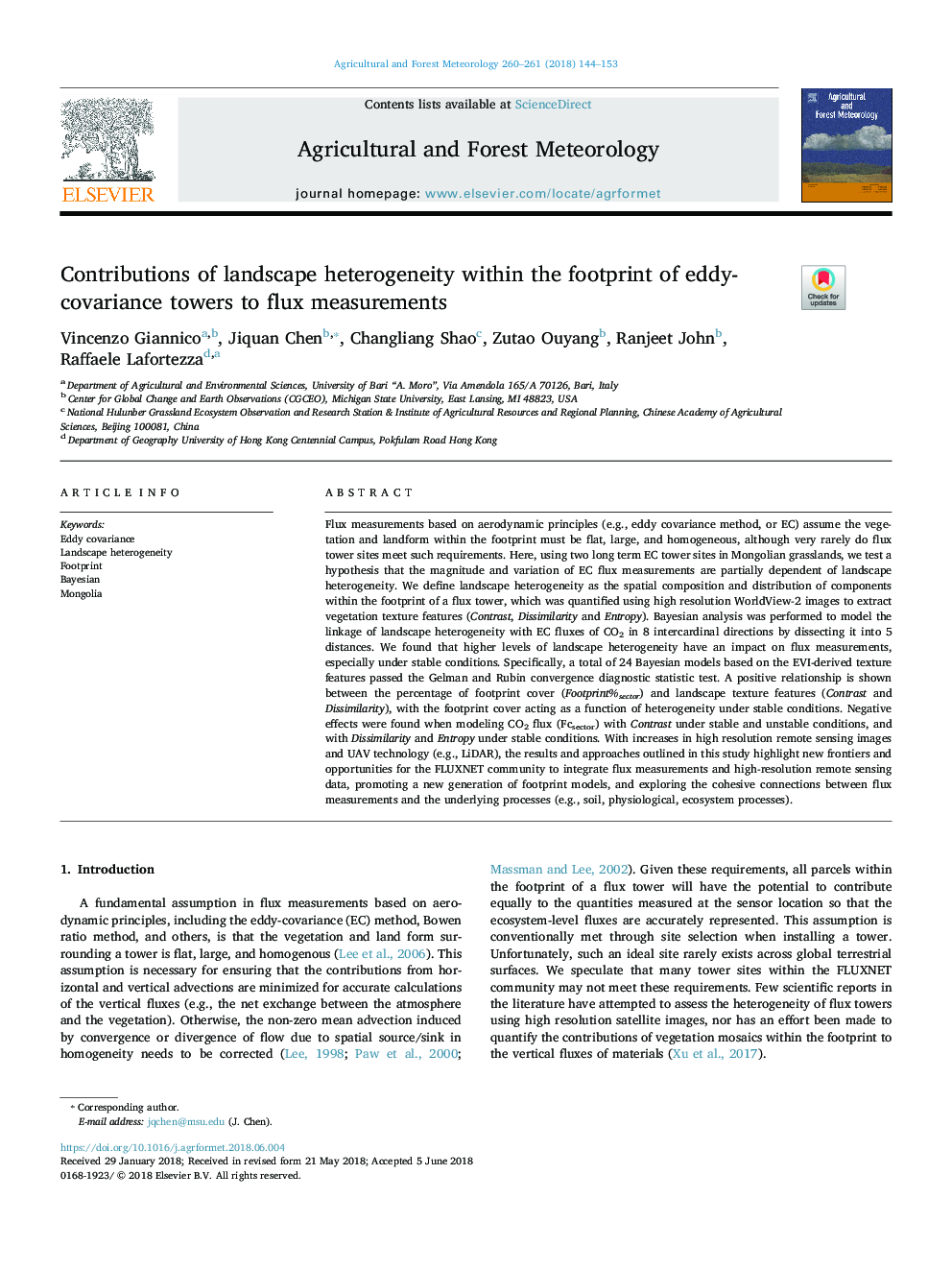| Article ID | Journal | Published Year | Pages | File Type |
|---|---|---|---|---|
| 6536609 | Agricultural and Forest Meteorology | 2018 | 10 Pages |
Abstract
Flux measurements based on aerodynamic principles (e.g., eddy covariance method, or EC) assume the vegetation and landform within the footprint must be flat, large, and homogeneous, although very rarely do flux tower sites meet such requirements. Here, using two long term EC tower sites in Mongolian grasslands, we test a hypothesis that the magnitude and variation of EC flux measurements are partially dependent of landscape heterogeneity. We define landscape heterogeneity as the spatial composition and distribution of components within the footprint of a flux tower, which was quantified using high resolution WorldView-2 images to extract vegetation texture features (Contrast, Dissimilarity and Entropy). Bayesian analysis was performed to model the linkage of landscape heterogeneity with EC fluxes of CO2 in 8 intercardinal directions by dissecting it into 5 distances. We found that higher levels of landscape heterogeneity have an impact on flux measurements, especially under stable conditions. Specifically, a total of 24 Bayesian models based on the EVI-derived texture features passed the Gelman and Rubin convergence diagnostic statistic test. A positive relationship is shown between the percentage of footprint cover (Footprint%sector) and landscape texture features (Contrast and Dissimilarity), with the footprint cover acting as a function of heterogeneity under stable conditions. Negative effects were found when modeling CO2 flux (Fcsector) with Contrast under stable and unstable conditions, and with Dissimilarity and Entropy under stable conditions. With increases in high resolution remote sensing images and UAV technology (e.g., LiDAR), the results and approaches outlined in this study highlight new frontiers and opportunities for the FLUXNET community to integrate flux measurements and high-resolution remote sensing data, promoting a new generation of footprint models, and exploring the cohesive connections between flux measurements and the underlying processes (e.g., soil, physiological, ecosystem processes).
Related Topics
Physical Sciences and Engineering
Earth and Planetary Sciences
Atmospheric Science
Authors
Vincenzo Giannico, Jiquan Chen, Changliang Shao, Zutao Ouyang, Ranjeet John, Raffaele Lafortezza,
